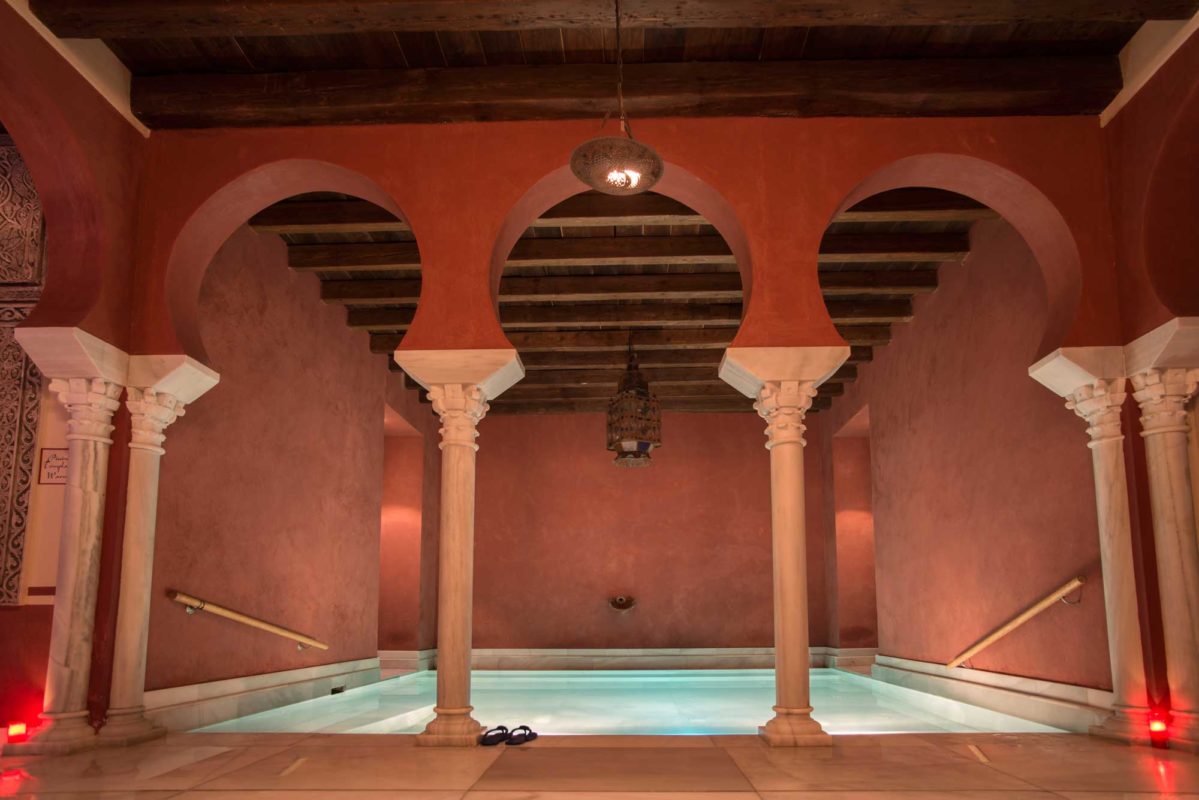The Califal Baths are Arab baths of Córdoba (Spain), whose remains were found accidentally in 1903 in Campo Santo de los Mártires, which months later were buried. Between 1961 and 1964, a group of Cordovan historians brought to light this construction, leaving evidence of the great extent of it.
These baths or hammam, contiguous to the disappeared Umayyad Alcázar, to which they surely belonged, were possibly the most important in the city. Ablutions and body cleansing were an essential part of the Muslim’s life. They were mandatory of the prayer, besides constituting a social rite.
Made under the caliphate of Alhakén II for the enjoyment of the caliph and its court, they form a group of rooms with masonry walls. Replicate the inherited order of the Roman baths of cold rooms, warm and warm, in different rooms closed with vaults (where the characteristic star skylights appear), supported by ultra semicircular arches on capitals and marble columns.
During the 11th to 13th centuries, they were reused by Almoravids and Almohads; proof of this are the plasterwork carved with motifs of ataurique and epigraphic stripes of the period that are kept in the Archaeological Museum of Córdoba.
It is part of the historic center of Cordoba that was declared a World Heritage Site by Unesco in 1994.

 Español
Español Français
Français Italiano
Italiano
 WhatsApp
WhatsApp